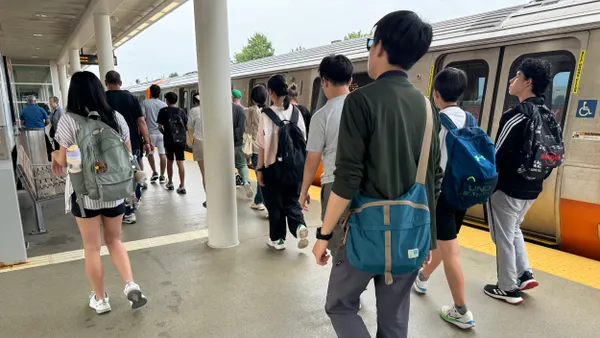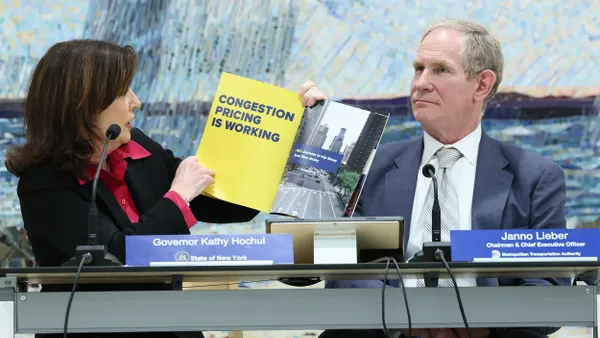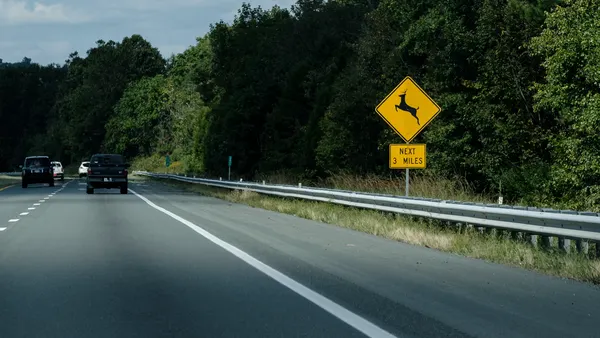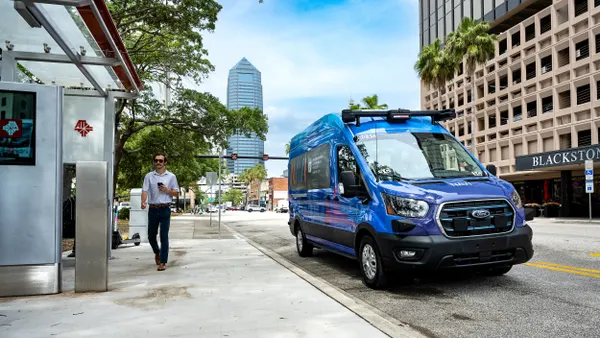Dive Brief:
- Ford is encouraging automakers to coalesce around a universal signaling system for autonomous vehicles (AVs) to communicate their intent to pedestrians, bikers and other drivers. In a Medium post, Ford human factors technical specialist John Shutko wrote that "one, universal communication interface people across geographies and age groups can understand is critical for the successful deployment of self-driving technology."
- Ford has previously tested a light bar mounted above the windshield of a driverless car in partnership with the Virginia Tech Transportation Institute, which signaled when a car was yielding, actively driving or accelerating from a stop. The signals "did not encourage any unsafe behavior by other road users," according to Ford.
- The call for a universal signal was issued to all vehicle developers, automakers and tech companies working on level-4 automation. Ford also said it will share the results of a virtual reality study it conducted, where participants interacted with a simulated AV on a street corner.
Dive Insight:
Self-driving vehicles won’t just have to interact with each other and shared infrastructure, but with other humans not connected to an artificial intelligence (AI) system. Given wavering consumer sentiment about AVs — an August study from Cox Automotive found that only 45% of those surveyed thought AVs were safe — and especially concerns about interactions with pedestrians, establishing trust on the road will be necessary to ensure that AVs take off.
In Ford’s model, a light bar displays three possible signals: two white lights moving side to side to indicate yielding; a solid white light to indicate active driving on one path; and a rapidly blinking white light for moving from a stop. Another approach comes from startup Drive.ai, which launched a pair of autonomous shuttle fleets in Texas outfitted with LED screens to communicate messages to pedestrians (like "Waiting" or "Going").
Ford hopes to build on the light bar test — in which a Transit Connect vehicle with a hidden human controller drove more than 2,000 miles and used cameras to gauge outsiders’ reactions — by putting the interface system on Fusion Hybrid self-driving cars used by Argo AI in Miami-Dade County.
Ford also plans to take the system abroad to Europe to see if the same signals are understood there, and is working with the International Organization of Standardization (ISO) and Society of Automotive Engineers (SAE) to discuss the placement of signals, the color of the lights and the design of the signals.
"It’s critical that the communications method we agree upon is as readily understandable as a brake light or turn signal indicator," Shutko wrote. "After all, ensuring self-driving vehicles are integrated into society without overwhelming or confusing anyone is what success looks like."









